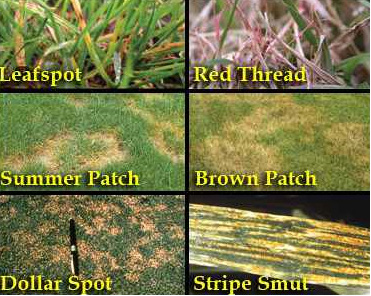Summer Lawn Patch Diseases
Summer patch, Magnaporthe poae, and necrotic ring spot, Leptosphaeria korrae, are two separate diseases which attack turfgrass roots and previously were referred to as fusarium blight. Research continues to look for information on these diseases. Brown patch, Rhizoctonia solani, may also attack lawns. These “patch diseases” are similar in appearance and management.

Summer patch and brown patch tend to be most active in hot weather, while necrotic ring spot tends to be most active in late spring and in fall. Disease symptoms often show under lawn stress in summer, however.
Crescent shaped or circular patches of dead grass, often with clumps of green grass inside, are a characteristic symptom (often called “frogeye”). Lawns with advanced disease development may show irregular dead areas and streaks.
Treatment for these various diseases varies. A normal fertilizer application will help the lawn grow out of leaf spot and red thread. The others below normally require a fungicide treatment to stop the spread of the fungus.
If the disease goes untreated a lawn over seeding or slice seeding may be required for the lawn.






